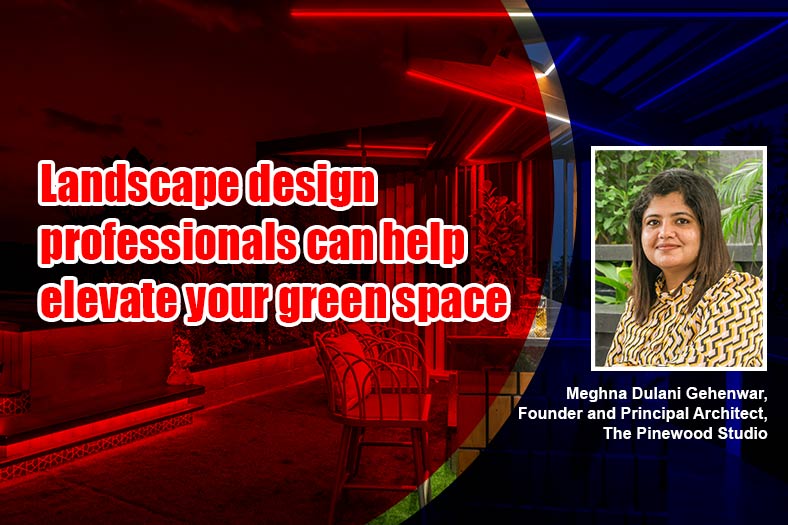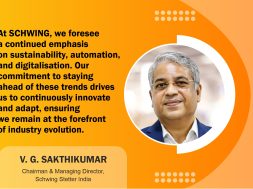Landscape design professionals can help elevate your green space

Even in the heart of the city, there is no reason to sacrifice the green space that makes a house feel like a home, a landscape designer can convert it to a place you and your family will desire to spend time.” says Meghna Dulani Gehenwar, Founder and Principal Architect, The Pinewood Studio.

What changes will the pandemic have on urban landscape design? What are some of the key learnings?
For the past decades, those looking at the intersections of planning, design, and public health have focused less on infectious diseases and more on chronic disease, hazards, and disasters, and the vulnerable. The current pandemic brings the question of designing for infectious diseases back to the forefront and raises important questions for future research and practice.
Public health and safety will likely be on people’s minds even after the threat of contracting COVID-19 diminishes. People are going to be considering density and wanting more of that public space to be outside and thinking about the transmission of germs.
The pandemic has taught us that cities need to improve their infrastructure to help people live healthier lives. Some of the key factors are air quality, access to daylight and sunlight, and the provision of open space.
Walkability in local outdoor spaces has proved particularly important during the pandemic
Not everyone has access to safe, walkable spaces. For example, some communities don’t have enough sidewalks. Pedestrians should have enough room to walk or shop despite the public health crisis. Some of
these changes after the pandemic may decrease noise pollution and traffic and increase safety in busy areas.
Several restaurants, faced with restrictions on dine-in capacity, also reimagined outdoor seating options and found new uses for public space near their establishments. This trend will continue as restaurants and business owners look to include outdoor spaces in their place of work.
In the metro cities, it’s an era of sky rises. What kind of landscape design do you advise in such areas dominated by sky rises?
Architectural trends are currently formed considering the landscape, soil characteristics, and appearance of existing buildings. They develop in close connection with several features inherent in such an ambiguous phenomenon as a megapolis. It is important to add trees to rooftops, terraces or balconies high in the sky. The ‘living building’ designs then become a reality when forests reach a new high in the cities through sky rises.
The plant materials’ biggest challenge at this elevation is the wind, in addition to some extreme hot and cold temperatures. Think about trees near mountaintops with trunks that bow away from prevailing winds. Such plantations require wind resistance tests and a lightweight substrate in order to meet plants’ nutritional demands. Regular pruning will ensure trees don’t interrupt tenants’ views.
One can’t ignore the benefits the buildings can provide if successful. These include absorbing dust in the air and creating a microclimate to filter out sunlight. Custom drip irrigation systems provide ease of maintenance to the busy professionals and landscape lighting allows for nighttime enjoyment. Even in the heart of the city, there is no reason to sacrifice the green space that makes a house feel like a home. Whether you have an outdoor garden on a balcony, a rooftop lounge space or a small backyard, landscape design professionals can help elevate your green space to a place you and your family desire to spend time.

As a landscape designer what piece of advice do you have for Tier 1 and Tier 2 cities and satellite townships which are coming up, what role can landscape design play to make such places more habitable?
The influx of professionals has increased the population in Tier 1 and 2 cities. Town planning, waste management and storm water management is crucial now more than ever. Especially environmental restoration and development of parks as breathing space. These green spaces ensure oxygen balance and air quality in cities that are headed towards increasing pollution levels. For example, large trees on both sides of the road provide shade and control increasing temperatures. Individual homes and corporate buildings should focus and invest in rainwater harvesting. Landscape architects should also make rainwater harvesting a mandatory part of their design.
For people who are lucky enough to have a house on a larger plot of land, what kind of landscape design would you advise?
For larger plots of land, I would suggest incorporating as less as hardscape and as much as softscape as possible. It’s important to create permeable surfaces so that the water table does not deplete. This is a great opportunity to create dedicated kitchegardens for home grown fresh vegetables. I highly recommend investing in good quality landscape lights which use the least amount of electricity. It is also advisable to use materials that are natural and locally available. This can be done through local contractors and indigenous techniques.
What are some of the key components to bring to life a beautiful landscape?
Plants have no fixed shape or form, so why should landscape be rigid? In my opinion, organic landscape design is more exciting and interactive. It makes you stop and ponder over creativity. In order to bring to life a beautiful landscape, it’s important to play with natural stones, wood, layering of different textures and intricate detailing as part of the design. Layering of plants can add variation throughout the greenspace. In addition to this, one can also create the play of light and shadow with pergola, trees etc.
6
Cookie Consent
We use cookies to personalize your experience. By continuing to visit this website you agree to our Terms & Conditions, Privacy Policy and Cookie Policy.









